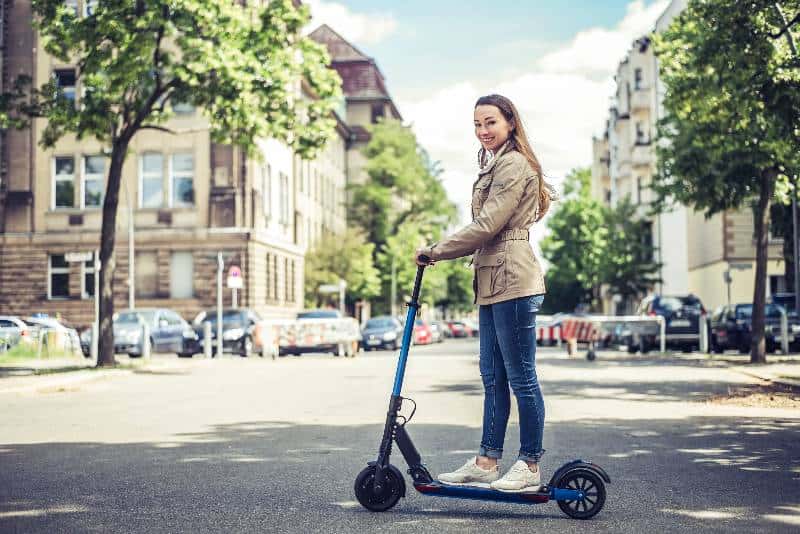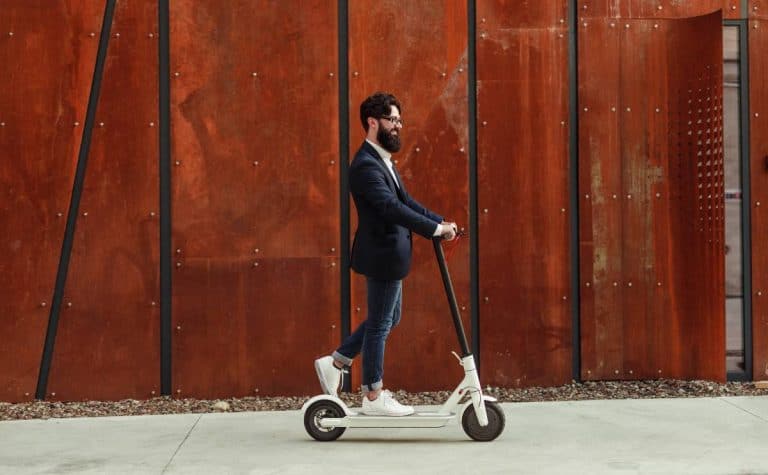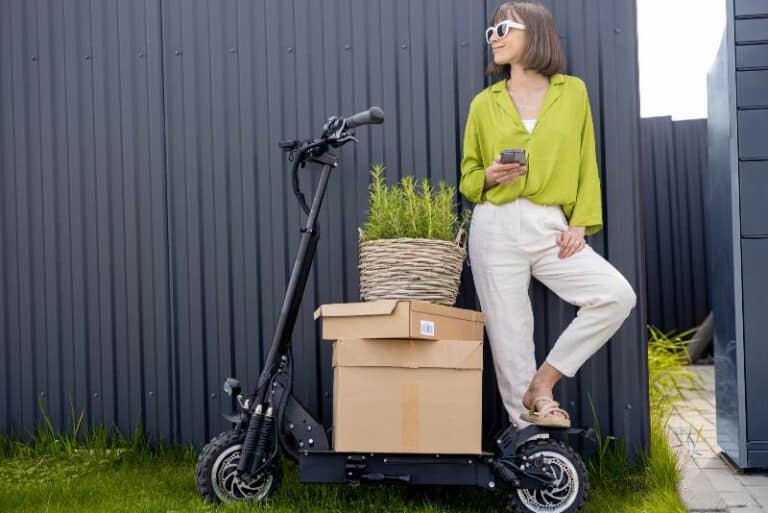Charging your Electric Scooter: What You Need to Know
Modern Electric scooters are becoming more and more popular, as people look for ways to reduce their carbon footprint and save money on transportation costs. But what do you need to know about charging your electric scooter? In this blog post, we will discuss how to charge an electric scooter, and how to charge your scooter safely.
Always use the manufacturer-approved charger that came with your electric scooter to prevent battery damage. The chemistry of the battery may not be compatible with non-brand chargers, or they may charge the battery at a rate that exceeds its limits.
Key Takeaways
- There are three types of charging connectors: USB, XT60, and GX16-30.
- To charge your electric scooter, plug the connector into an outlet and then attach it to your scooter’s battery.
- The first thing you need to know is how much power your scooter can handle. This information is usually printed on the side of the scooter somewhere, but if you can’t find it there, check out the manual or look up the information online.
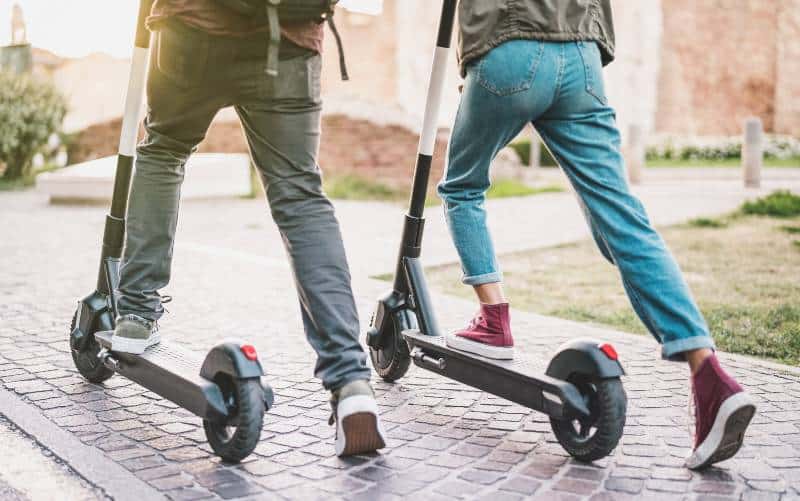
Correct and Safe Way to Charge an Electric Scooter
How To Charge An Electric Scooter? Here are correct and safe ways:
1. Let your scooter cool down
For safety and efficiency, it’s important to let your electric scooter cool down for about a few minutes before charging. This is especially true if you’ve been using it at high speeds or in extreme temperatures.
2. Ensure that neither your electric scooter nor its charger has any moisture on them.
It’s important to make sure that your electric scooter and charger are not wet. In fact, if they are wet, you should unplug the charger and let it dry out before plugging it back in. This is because water can cause an electrical short circuit, which could damage the charger or even start a fire.
3. Maintain a dry and cool temperature while charging.
Place the scooter on a flat surface in a dry, cool environment. Make sure that there is at least three feet of space around the scooter so it can charge properly.
If you live in a humid climate or it’s hot outside, try bringing your scooter inside for charging. If you don’t have the option to do that, make sure that the area where you’re charging is free from any moisture or excess heat.
4. Use an original charger
The correct and safest way to charge an electric scooter is with an original scooter battery charger from the manufacturer.
Using an original charger ensures that you’re using a quality product that was built for your model of scooter. This means that it’ll be able to provide the power required to charge your battery quickly and safely.
Using a generic or aftermarket charger can cause damage to your scooter, including a potential fire hazard or even an explosion.
5. Plug the charger into the power outlet first
The best way to charge an electric scooter is to plug the charger into the power outlet first, then plug in the scooter.
6. Turn off your scooter while charging
The best way to charge your electric scooter is to turn it off. This will prevent any damage or fires from occurring as you charge.
7. Connect the charger plug to the scooter’s charging port
The best way to charge your electric scooter is to connect the charger plug. Make sure that you have one that is compatible with your scooter before attempting to plug it in.
8. Wait for the scooter to charge
The best way to charge an electric scooter is to wait for it to charge. It can take anywhere from 30 minutes to 12 hours depending on the size of your battery.
Most modern electric scooters will indicate the charging status on their display.
9. Charge your battery until it’s fully charged
The best way to charge an electric scooter is to charge it until the battery is fully charged. This will ensure that you have enough power to go for a ride when you need it most.
10. After the scooter is fully charged, unplug it (don’t leave it plugged in).
The best way to charge an electric scooter is to unplug it after it has been charged. This will ensure that your battery doesn’t discharge over time and leave you with a dead scooter when you need it most.
How to Use a Quick Charger to Charge E-Scooter
Dual Charging
Electric scooter batteries that have greater performance typically have two charging ports. This permits the addition of a second charger for faster-charging speeds.
The steps for charging with a second charger are identical to those outlined above, but for the second charger.
Charging Myths
Myth 1: After every ride, you should charge the scooter.
It is unnecessary to charge your scooter every day or after every ride. It’s best to keep the battery level between 30% and 80%.
If you’re going to be riding for a long time, make sure that the scooter has been fully charged.
Myth 2: You should always fully charge a scooter’s battery before riding, and then fully discharge it before charging again.
You don’t need to charge your bike completely before riding.
You should recharge the battery when it is low, not just because you feel like doing a ritual.
You do not need to fully discharge your scooter’s battery before charging. Lithium-ion batteries don’t have a “memory” like other types of batteries that would require full charge/discharge cycles to maintain capacity.
Additional Charging & Safety Tips
Store your scooter at 40% charge in a cool, dry place when it’s not in use
Keeping lithium-ion batteries in a fully discharged state is the number one killer of good batteries and the worst thing you can do for their longevity.
Keeping batteries fully charged or discharged accelerates battery deterioration.
For longer-term storage, such as during the winter months, a 40% charge is recommended. Due to self-discharge, you’ll need to inspect and recharge the battery every four to eight weeks to maintain this level.
Place your scooter in a dry and cool location. Keeping items above 30 degrees Celsius / 86 degrees Fahrenheit will reduce their shelf life. storing fully charged batteries at elevated temperatures is particularly detrimental.
Use your scooter’s battery between 30% and 80% capacity
Using the battery at between 30 and 80 percent of its capacity will extend its life. This is known as the sweet spot and can increase battery life by up to four times.
The optimal voltage range for individual cells is between 3.36 volts (30% capacity) and 3.96 volts (80% capacity).
Below is a chart illustrating the optimal final voltage for a given scooter’s optimal charge.
Optimal Voltage Charging Chart
| Battery % | 36V, 10S | 48V, 13S | 52V, 14S | 60V, 16S | 72V, 20S |
| 100 | 42.0 V | 54.6 V | 58.8 V | 67.2 V | 84.0 V |
| 95 | 41.4 V | 53.8 V | 58.0 V | 66.2 V | 82.8 V |
| 90 | 40.8 V | 53.0 V | 57.1 V | 65.3 V | 81.6 V |
| 85 | 40.2 V | 52.3 V | 56.3 V | 64.3 V | 80.4 V |
| 80 | 39.6 V | 51.5 V | 55.4 V | 63.4 V | 79.2 V |
| 75 | 39 V | 50.7 V | 54.6 V | 62.4 V | 78.0 V |
| 70 | 38.4 V | 49.9 V | 53.8 V | 61.4 V | 76.8 V |
| 65 | 37.8 V | 49.1 V | 52.9 V | 60.5 V | 75.6 V |
| 60 | 37.2 V | 48.4 V | 52.1 V | 59.5 V | 74.4 V |
| 55 | 36.6 V | 47.6 V | 51.2 V | 58.6 V | 73.2 V |
| 50 | 36.0 V | 46.8 V | 50.4 V | 57.6 V | 72.0 V |
| 45 | 35.4 V | 46.0 V | 49.6 V | 56.6 V | 70.8 V |
| 40 | 34.8 V | 45.2 V | 48.7 V | 55.7 V | 69.6 V |
| 35 | 34.2 V | 44.5 V | 47.9 V | 54.7 V | 68.4 V |
| 30 | 33.6 V | 43.7 V | 47.0 V | 53.8 V | 67.2 V |
| 25 | 33.0 V | 42.9 V | 46.2 V | 52.8 V | 66.0 V |
| 20 | 32.4 V | 42.1 V | 45.4 V | 51.8 V | 64.8 V |
| 15 | 31.8 V | 41.3 V | 44.5 V | 50.9 V | 63.6 V |
| 10 | 31.2 V | 40.6 V | 43.7 V | 49.9 V | 62.4 V |
| 5 | 30.6 V | 39.8 V | 42.8 V | 49.0 V | 61.2 V |
| 0 | 30.0 V | 39.0 V | 42.0 V | 48.0 V | 60.0 V |
Do not fully charge your scooter in less than an hour
If you have a rapid scooter and wish to travel quickly, it will be necessary to discharge the battery quickly.
But even so, if you’re genuinely worried, you shouldn’t discharge the battery at a percentage that will completely deplete it in under one hour.
On consistent high-speed runs or under heavy torque loads, such as speeding up up a steep hill, you seem to be likely to exceed this ideal discharge rate, if only temporarily.
How Long Does It Take To Charge An Electric Scooter?
Charging an electric scooter can take anywhere from four to twenty hours, but this time can vary greatly depending on the battery capacity and chargers that are being used.
You can make an educated guess about how long it will take a battery to charge from 0% to 100% by consulting the charging timetable. To use the table, find the capacity of your battery (in Ah) and the amount of current that your charger puts out (from 1 Amp to 5 Amp).
The current output of most smaller scooter chargers ranges from 1 A to 2 A, whereas the current output of larger scooters (or dual chargers) typically ranges from 2.5 A to 5.0 A.
Charging Time-Table
| Battery (Ah) | 1 A | 2 A | 3 A | 4 A | 5 A |
|---|---|---|---|---|---|
| 2.6 Ah | 2.6 hr | 1.3 hr | 0.9 hr | 0.7 hr | 0.5 hr |
| 5.2 Ah | 5.2 hr | 2.6 hr | 1.7 hr | 1.3 hr | 1.0 hr |
| 7.8 Ah | 7.8 hr | 3.9 hr | 2.6 hr | 2.0 hr | 1.6 hr |
| 10.4 Ah | 10.4 hr | 5.2 hr | 3.5 hr | 2.6 hr | 2.1 hr |
| 13 Ah | 13.0 hr | 6.5 hr | 4.3 hr | 3.3 hr | 2.6 hr |
| 15.6 Ah | 15.6 hr | 7.8 hr | 5.2 hr | 3.9 hr | 3.1 hr |
| 18.2 Ah | 18.2 hr | 9.1 hr | 6.1 hr | 4.6 hr | 3.6 hr |
| 20.8 Ah | 20.8 hr | 10.4 hr | 6.9 hr | 5.2 hr | 4.2 hr |
| 23.4 Ah | 23.4 hr | 11.7 hr | 7.8 hr | 5.9 hr | 4.7 hr |
| 26 Ah | 26.0 hr | 13.0 hr | 8.7 hr | 6.5 hr | 5.2 hr |
| 28.6 Ah | 28.6 hr | 14.3 hr | 9.5 hr | 7.2 hr | 5.7 hr |
Connector Types
USB power connector
Most electric scooters have USB power connectors. USB power connectors are used to charge a variety of devices, including mobile phones, tablets, and laptops. There are two main types: USB Type-A (or “standard”) and USB Type-C (or “micro”). The latter is much smaller than the former and can be inserted either way up.
XT60
The connector on your E-scooter is a square, keyed, two-pin design. The pin in the center of the square is positive, while the outer pin is negative.
GX16-3P
The circular, three-pin connector with a threaded collar is a standard connector for electric scooters. It has a threaded collar that allows the cable to be easily inserted and removed from the connector.
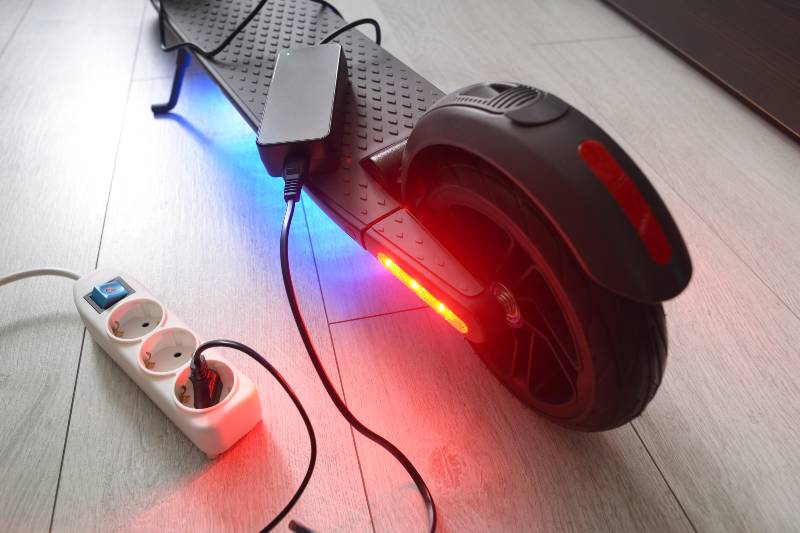
How To Charge An Electric Scooter FAQs
How do your scooter’s batteries age?
The typical lifespan of a battery for an electric scooter is between two and three years, or anywhere from 300 to 500 full charge cycles, whichever occurs first. After 200–300 total charge cycles, you should anticipate the performance of the battery to begin to deteriorate. Batteries of lower quality can have a lifespan of less than one year, whereas batteries of higher quality can have a lifespan of up to five years.
Why is it important to store partially charged?
Battery cells will continue to discharge even while the batteries are in storage. If the voltage per cell drops below 2.7 volts, the battery will experience serious degradation and may even become unstable and potentially dangerous.
Why is plugging the charger into the wall first the best practice?
This is the most foolproof method for guarding both the charger and the output capacitors it contains. During the charging process, it is completely normal for the charger to become hot to the touch. Put your charger on its side, uncovered, on a non-combustible surface that has plenty of room for air to circulate around it.
Why shouldn’t you leave the scooter plugged in after charging?
After the battery of your scooter has been fully charged, it won’t be a big deal if you leave it plugged in for a few minutes. However, even if it has protection against overcharging, the electric scooter’s battery life could be shortened if it is left plugged in for an excessively long period of time.
How long will my battery life last?
Depending on how they are stored, how the scooter is used, and the battery capacity, the batteries that power electric scooters can last anywhere from two to four years and three thousand to five thousand miles. The battery life of your scooter will decrease if you use it more frequently or if you store it in an improper manner.
Can I charge my electric scooter overnight?
Even after the scooter has reached its maximum capacity, it is not dangerous to leave the charger plugged into the vehicle (when charging overnight, for example). On the other hand, we strongly advise against keeping the charger plugged in for any longer than is strictly necessary.
What if I don’t have a charger?
You can charge your electric scooter without the charger in one of three different ways: by purchasing a replacement charger, by making use of a portable car jumper, or by making use of a variable power supply.
Conclusion
Chargers are an important part of electric scooter ownership, and it is crucial to use the manufacturer-approved charger that came with your scooter. Non-brand chargers may not be compatible with your electric scooter battery chemistry or could charge at a rate that exceeds the battery’s limits, potentially damaging the battery. Always follow the charging instructions included in your scooter’s Owner’s Manual for safe and long-lasting operation.
Additionally. When charging your electric scooter, be sure to do so correctly and safely. Following the correct procedures will help ensure that your scooter is ready to ride when you are and that it remains in good condition for years to come.
